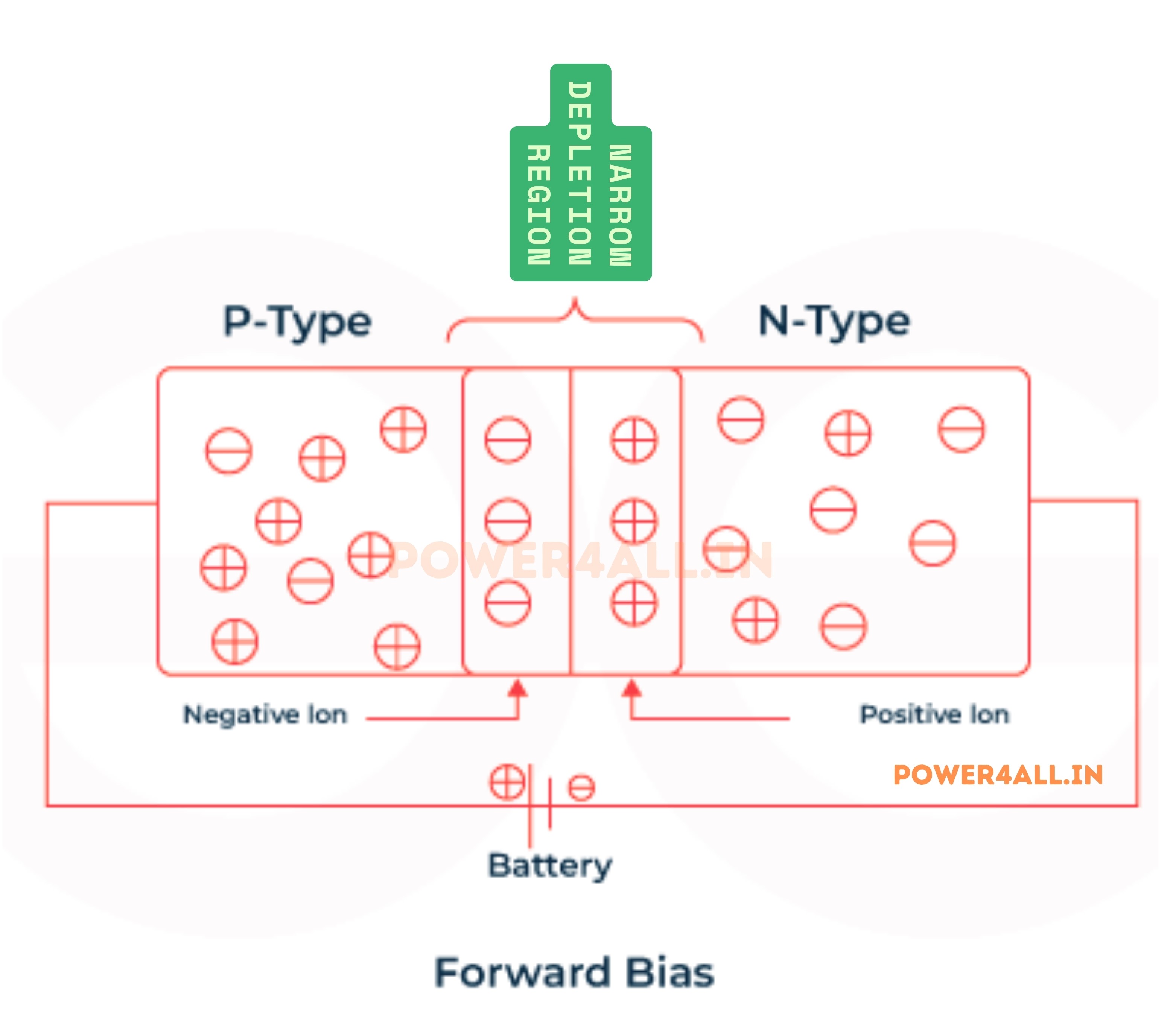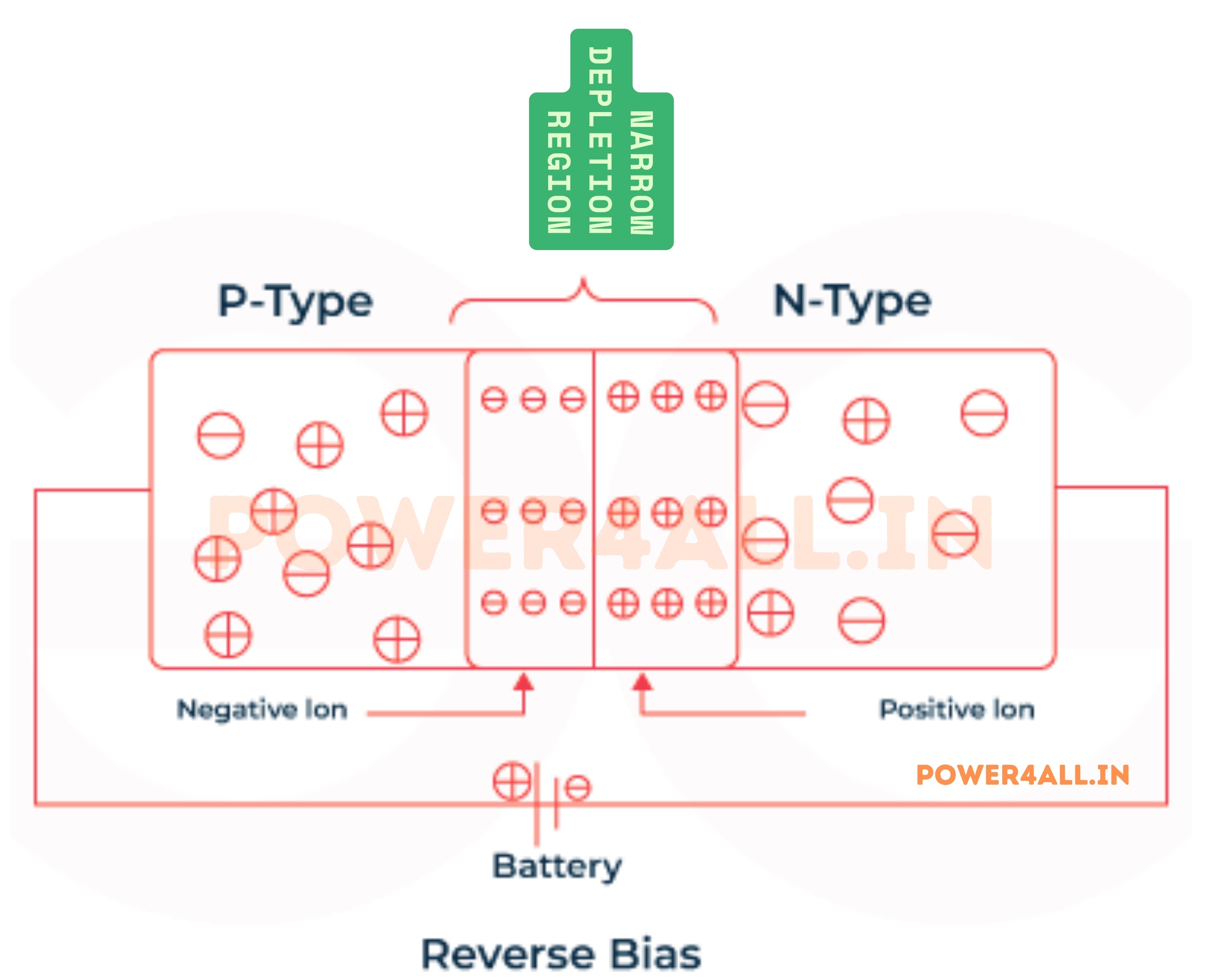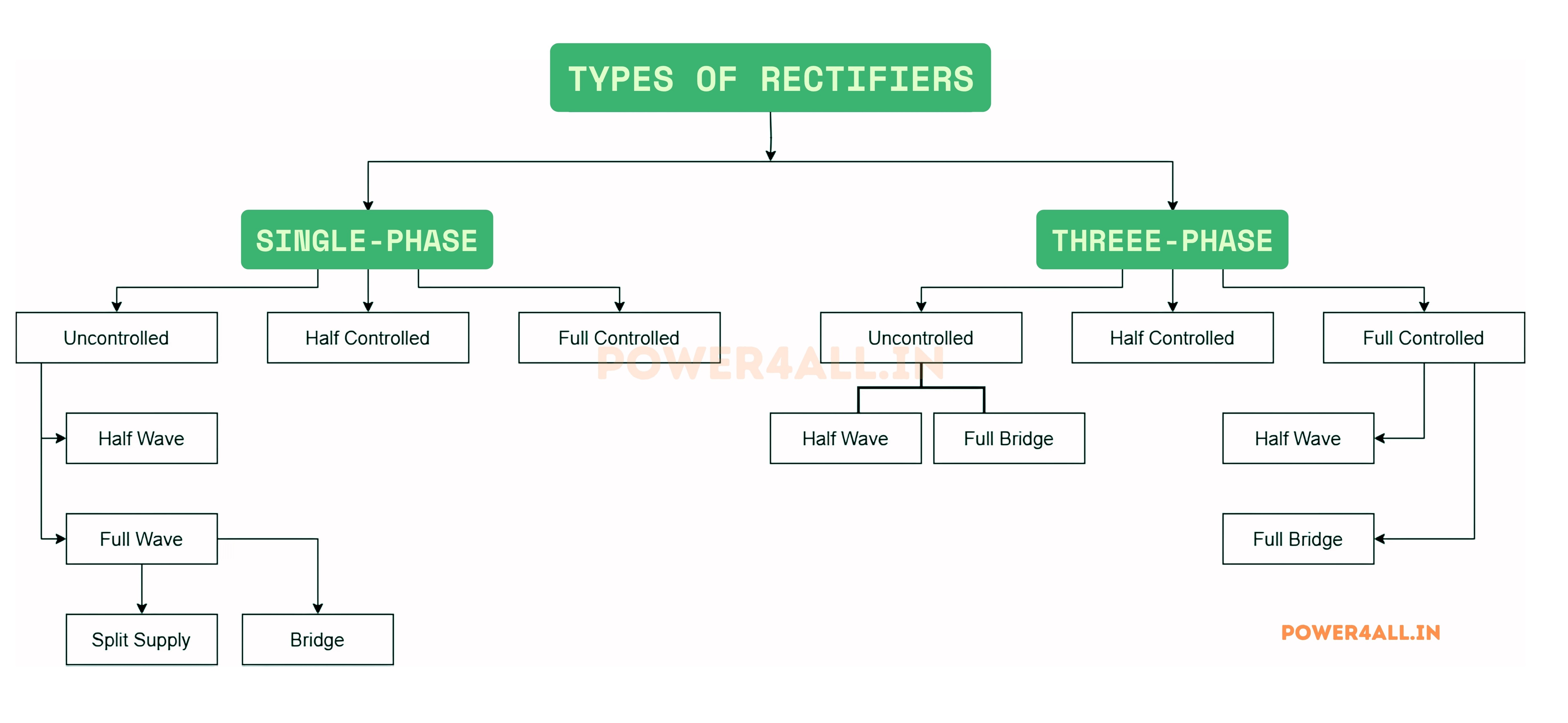Rectifier
The primary function of a rectifier is to convert alternating current (AC) into direct current (DC).
Introductiont
A Rectifier is an electronic device that changes alternating current (AC) into direct current (DC). It does this by allowing electricity to flow in only one direction, using special components called P-N junction diodes.
Many electronic devices need DC power to work. The rectifier helps by converting the AC from power outlets into DC. The key part of a rectifier is the diode. A diode acts like a one-way gate for electricity: it lets current pass in one direction (forward bias) and blocks it in the other (reverse bias).
By using this property, diodes can turn AC, which flows back and forth, into DC, which flows in just one direction. This process is called Rectification.
What is Rectifier?
A rectifier is an electronic circuit composed of one or more diodes that permit the flow of electric current in only one direction. It serves to convert alternating current to direct current. Rectifiers are constructed in various configurations, including semiconductor diodes, silicon-controlled rectifiers, vacuum tube diodes, mercury-arc valves, and other designs tailored to specific applications.
A rectifier is an electrical device utilized for converting Alternating Current (AC) into Direct Current (DC) by leveraging one or more P-N junction diodes

How Rectifiers Work?
Mode-1 when Diode is forward-biased
When a voltage is applied to the P-N junction diode in a manner where the positive terminal of the battery is connected to the P-type semiconductor and the negative terminal of the battery is linked to the N-type semiconductor, the diode is said to be forward biased. Under forward bias, the numerous free electrons (majority carriers) in the N-type semiconductor encounter a repulsive force from the negative terminal of the battery, while the multitude of holes (majority carriers) in the p-type semiconductor are subjected to a repulsive force from the positive terminal of the battery.

In the N-type semiconductor, during forward bias, the free electrons migrate from the N-side to the P-side, while the holes in the P-type semiconductor move in the opposite direction, from the P to the N-side. This movement of charges constitutes an electric current. The maximum number of carriers during forward bias gives rise to the majority current.
When a voltage is applied to the P-N junction diode in a manner such that the positive terminal of the battery is connected to the N-type and the negative terminal of the battery is connected to the P-type, the diode is considered to be in a reverse-biased state.e circuit is composed of two inductors, two capacitors, and two static switches, which are semiconductor devices consisting of a diode and a transistor (MOSFET, IGBT, or BJT). The diode functions as an uncontrolled switch, automatically toggling on and off in response to the voltage across it.
When a reverse bias voltage is applied to the P-N junction diode, the surplus of free electrons in the N-type semiconductor is drawn towards the positive terminal of the battery. Simultaneously, a significant number of holes in the P-type semiconductor are pulled towards the negative terminal of the battery. Due to its higher input impedance and lower voltage drop, MOSFETs are the preferred choice over IGBTs and BJTs in the majority of DC-to-DC converters. MOSFETs are controlled by modulating the gate terminal using PWM signals.

In reverse bias, the N-type semiconductor's free electrons move away from the P-N junction and are attracted to the positive terminal of the battery. Simultaneously, the holes in the P-type semiconductor move away from the P-N junction and are attracted to the negative terminal of the battery. This results in no electric flow across the P-N junction. The minority carriers in the P-type and N-type semiconductors experience a repulsive force from the negative and positive battery terminals, respectively, causing the minority carriers (free electrons in the P-type and holes in the N-type) to start flowing in the junction. However, the resulting electric current from the minority carriers is very small and is thus neglected in reverse bias.
The P-N junction allows the current in the forward bias and blocks the current in the reverse bias. In simple words the P-N unction allows electric current in one direction only. This unique property of the diode allows it to behave like a rectifier.
Different Types of Rectifiers
Rectifiers are categorized into a variety of designs depends on factors namely, type of supply, bridge configuration, components used, control nature, etc. Majorly these are classified into two types they are single-phase and three-phase rectifier. Further rectifiers are classified into three types namely uncontrolled, half controlled, and full controlled rectifiers. Let us see in brief about some of these types of rectifiers. Rectifiers are classified into two types like uncontrolled rectifiers and controlled rectifiers.

Applications of Rectifiers
- Power Supplies: They form the backbone of DC power adapters for electronics, converting wall outlet AC into usable DC
- Battery Charging: Devices like electric vehicle chargers rely on rectifiers to transform AC grid power into DC for storing in batterie
- Industrial Processes: Electroplating, metal refining, and welding systems use high-power rectifiers to generate the steady DC currents required for these operations